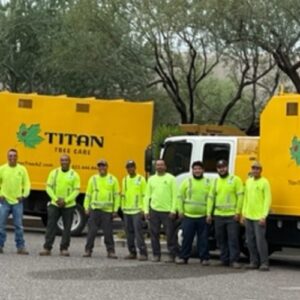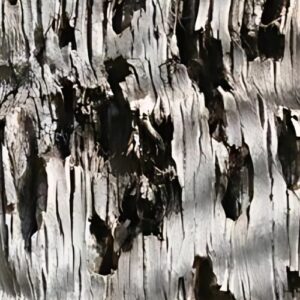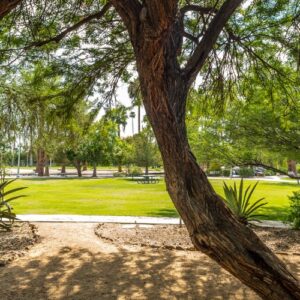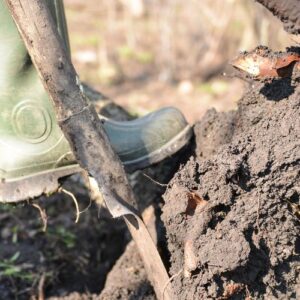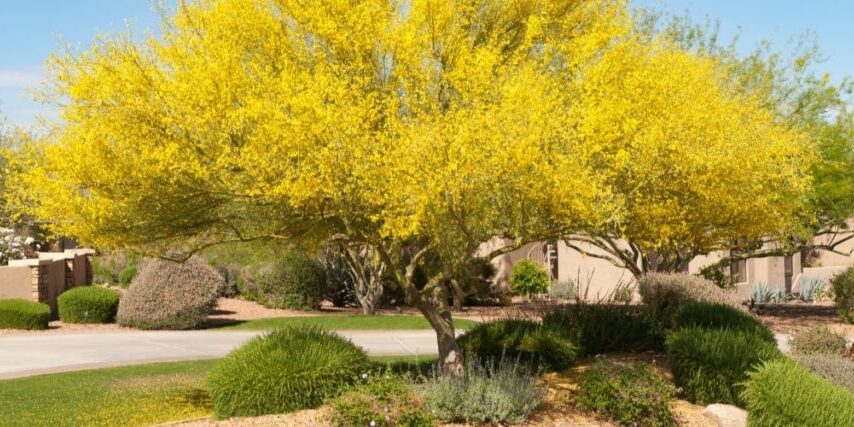
Living in North Phoenix means basking in sunshine year-round. As the second sunniest city in the United States (Yuma takes the number one spot), Phoenix boasts an average of 211 days of sunshine every year. With temperatures often soaring past 100 degrees during the summer and rarely dipping below freezing in winter, this desert climate presents unique challenges for plant life.
Trees, in particular, require careful attention to thrive in such a harsh environment. While growing healthy Arizona trees isn’t always a walk in the park, the rewards are substantial. From providing shade and cooling your home to increasing your property value, it’s worth the water and extra effort to keep our trees alive.
Key Takeaways:
- Through evapotranspiration, trees help combat the urban heat island effect Phoenix is experiencing.
- Proper watering, regular pruning, mulching, and selecting native trees help trees thrive in an arid climate.
- Professional tree care from a certified arborist is important for early detection and treatment of other issues that threaten the health of our trees.
How Healthy Trees Help Beat the Heat
As North Phoenix residents, we’re constantly looking for ways to beat the heat. But did you know that nature has its own built-in cooling systems? Trees, often overlooked as just landscaping elements, actually help us combat the intense heat.
As if the desert wasn’t already hot enough, most of our cities in Arizona tend to be hotter than surrounding rural areas due to the heat-absorbing materials that make up all the buildings, roadways, and sidewalks. This is called the urban heat island effect.
By planting more trees and ensuring our current trees grow big and healthy, not only do we provide more shade, but we also help to cool our neighborhoods. Similar to how humans sweat to cool our bodies down, trees release water vapor into the atmosphere through their leaves. This process, called evapotranspiration, helps to lower the overall temperature of the surrounding area.

5 Tree Care Tips for Keeping Trees Healthy in Arizona’s Heat
Now that we understand the role our trees play in cooling North Phoenix, we need to cover some important tree care tips that will help keep our trees thriving for years to come.
1. Water Deeply and Less Frequently
It’s no coincidence that proper watering is the first tip we cover. That’s because, in Arizona, it is arguably one of the most crucial factors in determining a tree’s survival and overall health. Our arid climate doesn’t always provide regular moisture, so residents need to know how to avoid underwatering and overwatering.
Overwatering can suffocate roots, leading to root rot, and is often more detrimental to trees than underwatering. However, underwatering can cause roots to grow closer to the surface, making the tree more susceptible to drought stress, heat stress, and salt buildup.
How much water trees need depends on several factors, including:
- Tree age
- Tree species
- Soil type
- Climate conditions
However, every tree needs deep, infrequent watering. To do this, slowly apply water directly to the root zone, usually located directly under the tree’s canopy. Allow the water to soak deep into the soil, ideally reaching at least 24-36 inches. This encourages roots to grow deep, improving the tree’s drought tolerance and overall health.
2. Prune to Promote Healthy Growth
Proper pruning promotes tree health and shape. However, pruning done incorrectly can cause serious damage. A few things to keep in mind when it comes to pruning your trees are:
- Choose the Right Time: Most trees should be pruned during the dormant season, which is typically late winter or early spring. This is when the tree is inactive and can better tolerate the stress of pruning.
- Make Clean Cuts: Sharp, clean pruning tools should always be used to make smooth cuts just outside the branch collar. Avoid tearing or ragged edges, which can create entry points for diseases and pests.
- Remove Deadwood: Regularly remove dead, dying, damaged, or poorly structured branches to improve the tree’s overall health and appearance.
- Avoid Excessive Pruning: Over-pruning can stress the tree and make it more susceptible to pests, diseases, and environmental factors.
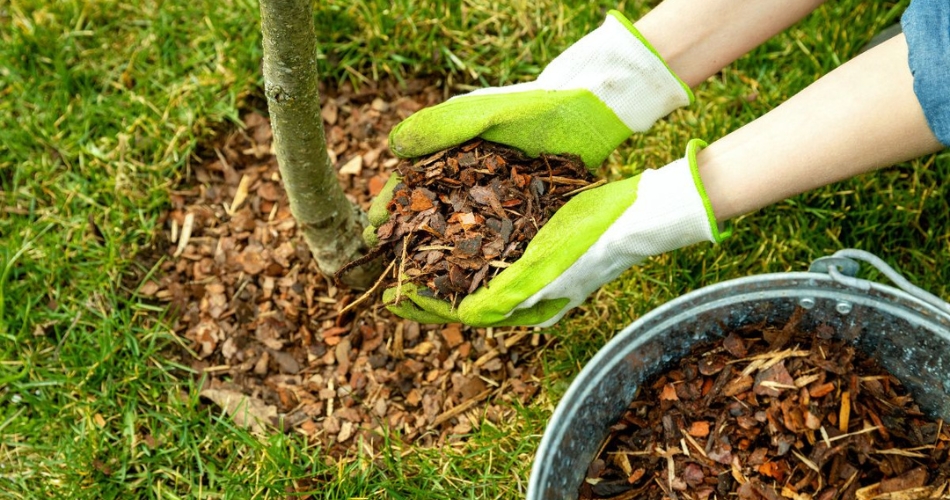
3. Apply Mulch to Retain Moisture and Regulate Soil Temperature
Mulch helps suppress weeds, so your tree’s roots don’t have to compete with other plants for
water and nutrients. But did you know mulch also helps maintain moisture and regulate soil temperature?
To correctly apply mulch, spread 2-3 inches of organic matter, such as wood chips or bark, around the base of your tree. Avoid piling mulch against the tree trunk, like a mulch volcano, as this can create a moist environment that promotes rot, diseases, and pests.
Many homeowners in Arizona use rocks or gravel in their yards as part of a xeriscape landscape to help conserve water. While this can be helpful overall, it is important to avoid using these materials around your trees. Rocks and gravel absorb heat and compact the soil around the tree’s roots.
4. Plant the Right Tree in the Right Place
Choosing the right tree for your landscape gives it a good head start on growing into a big and healthy tree you can rely on for years. Native trees are the best choice for Arizona’s arid climate because they have different characteristics than those in other areas of the country.
These trees have adapted to local conditions, including soil type, water availability, and temperature extremes. They are also more likely to be drought-tolerant and require less maintenance than non-native species.
When selecting the perfect native tree for your yard, consider the following:
- Mature Size: Ensure the tree will fit comfortably in your space without interfering with structures or utilities.
- Sunlight Requirements: Choose a tree that matches your planting site’s sun exposure. Some trees prefer full sun, while others thrive better in partial shade.
- Future Maintenance Needs: Some tree species need more frequent pruning, water, and pest control than others, saving you time and effort in the long run.
5. Monitor and Maintain Your Trees Regularly
Even the most cared-for trees need the attention and expertise of a trained professional. A local certified arborist can provide many services, including:
- Comprehensive tree assessments
- Pest and disease diagnosis and treatment
- Pruning recommendations
- Fertilization and soil amendments
- Tree removal or relocation
Investing in professional tree care services gives your tree the best chance at thriving in the desert.
Grow Healthy Trees in North Phoenix with Help from Titan Tree Care
Don’t let the Arizona heat get the best of your trees. Call Titan Tree Care today at 623-444-8448 to schedule a consultation and discover the difference professional tree care can make. From routine maintenance to emergency tree services, our team is committed to helping your trees thrive.
More Articles Like This

Titan Tree Care is a full-service tree care company located in Anthem, AZ and serving all of North Phoenix. We offer a wide range of services to meet your tree care needs, including tree and palm trimming, tree pruning, tree removal, stump grinding, and more. We also offer insect or disease treatments and fertilization services. We are dedicated to providing high-quality, safe, and effective tree care services to our customers and work hard to ensure that your trees are healthy and look their best.




